Statler Brothers

-
Inducted2008
-
Band Members:
- Harold Reid
- Phil Balsley
- Lew DeWitt
- Don Reid
- Jimmy Fortune
Phil Balsley
Born August 8, 1939
Birthplace Staunton, Virginia
Lew DeWitt
Born March 12, 1938
Died August 15, 1990
Birthplace Roanoke, Virginia
Jimmy Fortune
Born March 11, 1955
Birthplace Williamsburg, Virginia
Don Reid
Born June 5, 1945
Birthplace Staunton, Virginia
Harold Reid
Born August 21, 1939
Died April 24, 2020
Birthplace Augusta County, Virginia
The Statler Brothers grew from gospel quartet roots to enjoy a long, successful career as recording, touring, and television stars. For more than thirty years, they maintained one of country music’s top-grossing road shows, while enjoying great success as recording artists and television performers. All the while, they kept alive country’s venerable tradition of quartet singing, a tradition that reaches back to the genre’s early roots in gospel music.
Musical Roots and Early Career
In the early 1960s, the Statler Brothers coalesced around the talents of four Virginians: Phil Balsley, Lew DeWitt, Don Reid, and Harold Reid. Balsey, DeWitt, Harold Reid, and Joe McDorman had worked in a Staunton, Virginia, high school group called the Four Star Quartet, making their first appearance in 1955. By 1961, when Harold reorganized the act as the Kingsmen, Harold’s younger brother, Don, had replaced McDorman. The act featured a variety of country, pop, and gospel material, but crafted their harmonies along the lines of influential white gospel quartets such as the Statesmen and the Blackwood Brothers. To avoid confusion with a popular North Carolina-based gospel group also named the Kingsmen, they changed their name to the Statler Brothers (after Statler Tissues).
Songs
00:00 / 00:00
00:00 / 00:00
00:00 / 00:00
Breakthrough Success and a String of Hits
The year 1964 marked a turning point for the four young men. Early that year they joined Johnny Cash’s road show. They would remain with Cash’s troupe for more than eight years and were key members of his ABC network television show from 1969 to 1971.
A Columbia Records hitmaker, Cash insisted that the label add the Statlers to its roster, and they had their first Columbia recording session in April 1964. In March 1965, they cut DeWitt’s composition “Flowers on the Wall,” a #2 country hit that crossed over to #4 on the pop charts, won a 1965 Grammy Award for Best Contemporary Performance, Group, and helped the quartet garner another 1965 Grammy for Best New Country & Western Artist. But except for two country Top Tens in 1967, they struggled to build upon this success at Columbia.
As recording artists, the Statlers hit their stride after Jerry Kennedy, head of Mercury’s country division, signed them in 1969. Throughout their long career with the label, Kennedy produced their recordings, even after leaving to form his own production company in 1984. The group’s first Mercury single, “Bed of Rose’s,” became a Top Ten country single in 1970–1971. Eleven more Top Ten records followed during the 1970s, many of them written by the Reid brothers. These included the nostalgic “Do You Remember These” and “The Class of ’57,” “I’ll Go to My Grave Loving You,” and the group’s first chart-topping hit, “Do You Know You Are My Sunshine,” in 1978. They snagged another Grammy for “The Class of ’57” and won CMA’s Vocal Group of the Year Award six years running (1972–1977) and again in 1979, 1980, and 1984.
The group’s third Mercury album, Country Music Then and Now, featured their comic alter egos, “Lester ‘Roadhog’ Moran & His Cadillac Cowboys,” who parodied a fourth-rate hillbilly band from the waning days of live radio. An entire album followed, the hilarious Lester “Roadhog” Moran & His Cadillac Cowboys: Alive at the Johnny Mack Brown High School (1974). Subsequently, “the Old Road Hog” was retired and, according to last report, was “recovering from an autopsy.”
Videos
“Oh Baby Mine (I Get So Lonely)”
Country Legends Live, Vol. 2, c. 1982
“Flowers on the Wall”
The Johnny Cash Show, 1970
For more than thirty years, the Statler Brothers maintained one of country music’s top-grossing road shows, while enjoying great success as recording artists and television performers.
Photos
-
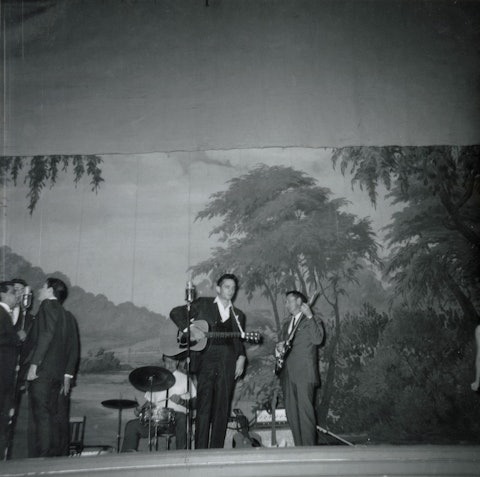
Johnny Cash and the Statler Brothers performing onstage in Des Moines, Iowa, 1965. Photo by Sandy Schroder.
-
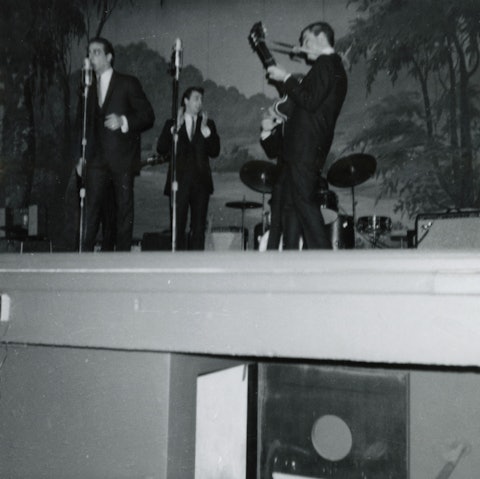
The Statler Brothers performing onstage in Des Moines, Iowa, 1966. Photo by Sandy Schroder.
-
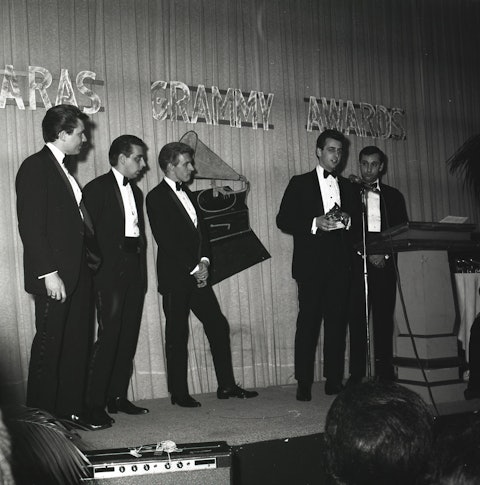
The Statler Brothers accepting an award at the Grammy Awards, 1966. Photo by Walden S. Fabry Studios.
-
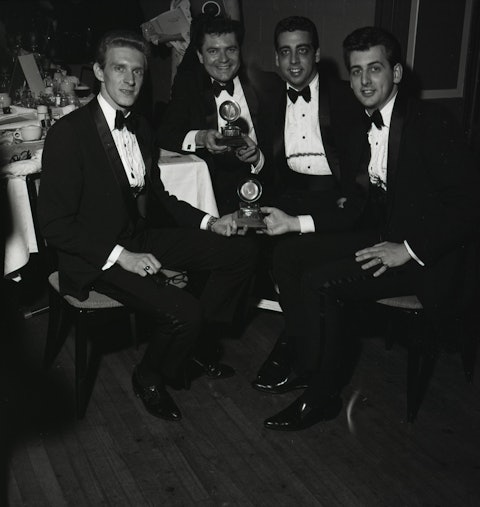
The Statler Brothers with their two Grammy Awards, 1966. Photo by Walden S. Fabry Studios.
-
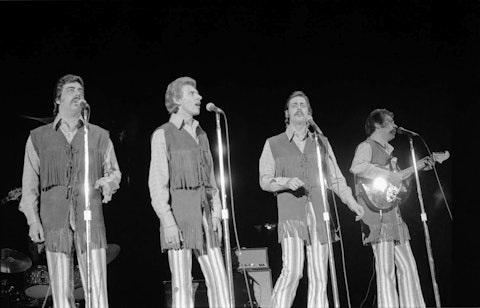
The Statler Brothers in concert at Southern Illinois University Carbondale, 1971. Photo by John Soden.
-
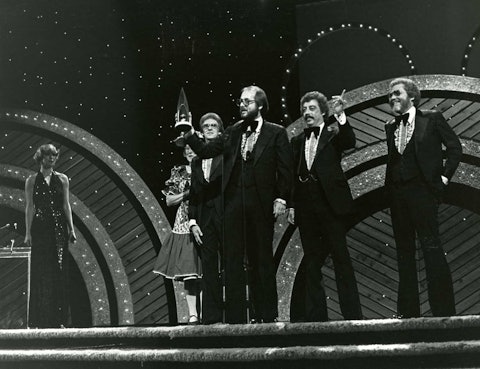
The Statler Brothers accepting the award for Vocal Group of the Year at the Country Music Association Awards, 1979. Photo by Steven Goldstein.
-
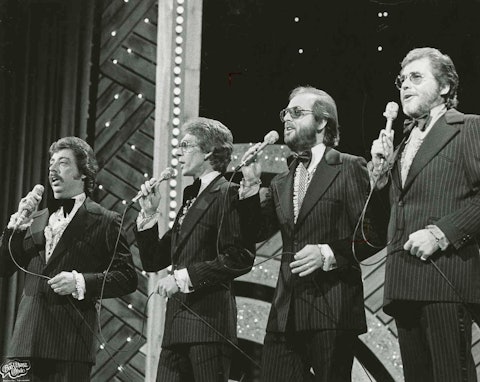
The Statler Brothers performing at what appears to be an awards show, 1970s. Photo by Bob Schanz.
-
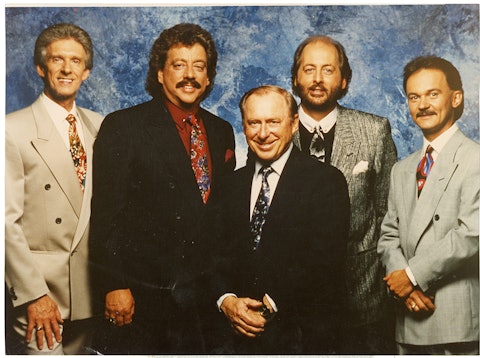
The Statler Brothers in the 1990s. Clockwise from top left: Harold Reid, Don Reid, Jimmy Fortune, and Phil Balsley.
-
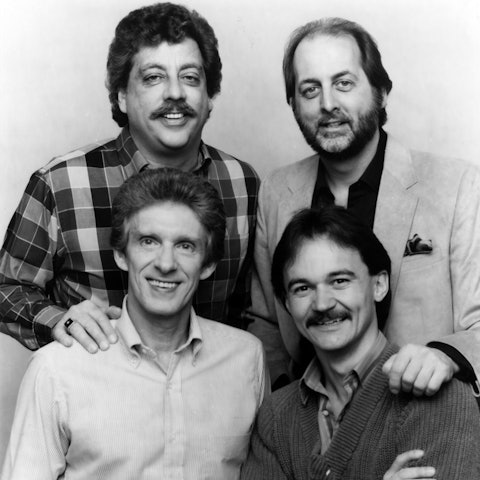
Statlers in the 1990s. Clockwise from top left: Harold Reid, Don Reid, Jimmy Fortune, Phil Balsley.
Change in Personnel, Continued Success
Never in robust health, DeWitt contended with Crohn’s disease, a disorder that sapped his energy and forced him to leave the group in 1982. His replacement, Jimmy Fortune, joined on a permanent basis the same year. Like Balsley, DeWitt, and the Reids, Fortune was also a Virginian. By now, the Statlers were hitting on all cylinders and, during the 1980s, scored eighteen Top Ten singles, including three #1 hits penned by Fortune: “Elizabeth” (1984), “My Only Love” (1985), and “Too Much on My Heart” (1985). Fortune also wrote the group’s final Top Ten record, “More Than a Name on a Wall” (#6, 1989).
Though they recorded and did business in Nashville, the Statlers made Staunton their base of operations, and they continued to live there. In 1970, the group staged their first Happy Birthday U.S.A. Fourth of July concert, parade, and community celebration. A top tourism draw, the event featured first-tier country artists as guest performers. It continued through 1995, with proceeds going to local charities.
From 1991 to 1997, a top-rated television show on the Nashville Network expanded the Statlers’ fame as one of country music’s most award-winning groups. This weekly Saturday night program resembled a typical 1950s variety show—a strategy the group deliberately pursued to reach a wide, often underserved audience. Although hit records eluded them, TV exposure supported their tours, and they consistently played to sellout crowds until they retired from the road in 2002.
Election to the Country Music Hall of Fame in 2008 was a well-deserved ending for one of American music’s greatest success stories.
—Colin Escott
Adapted from the Country Music Hall of Fame® and Museum’s Encyclopedia of Country Music, published by Oxford University Press



